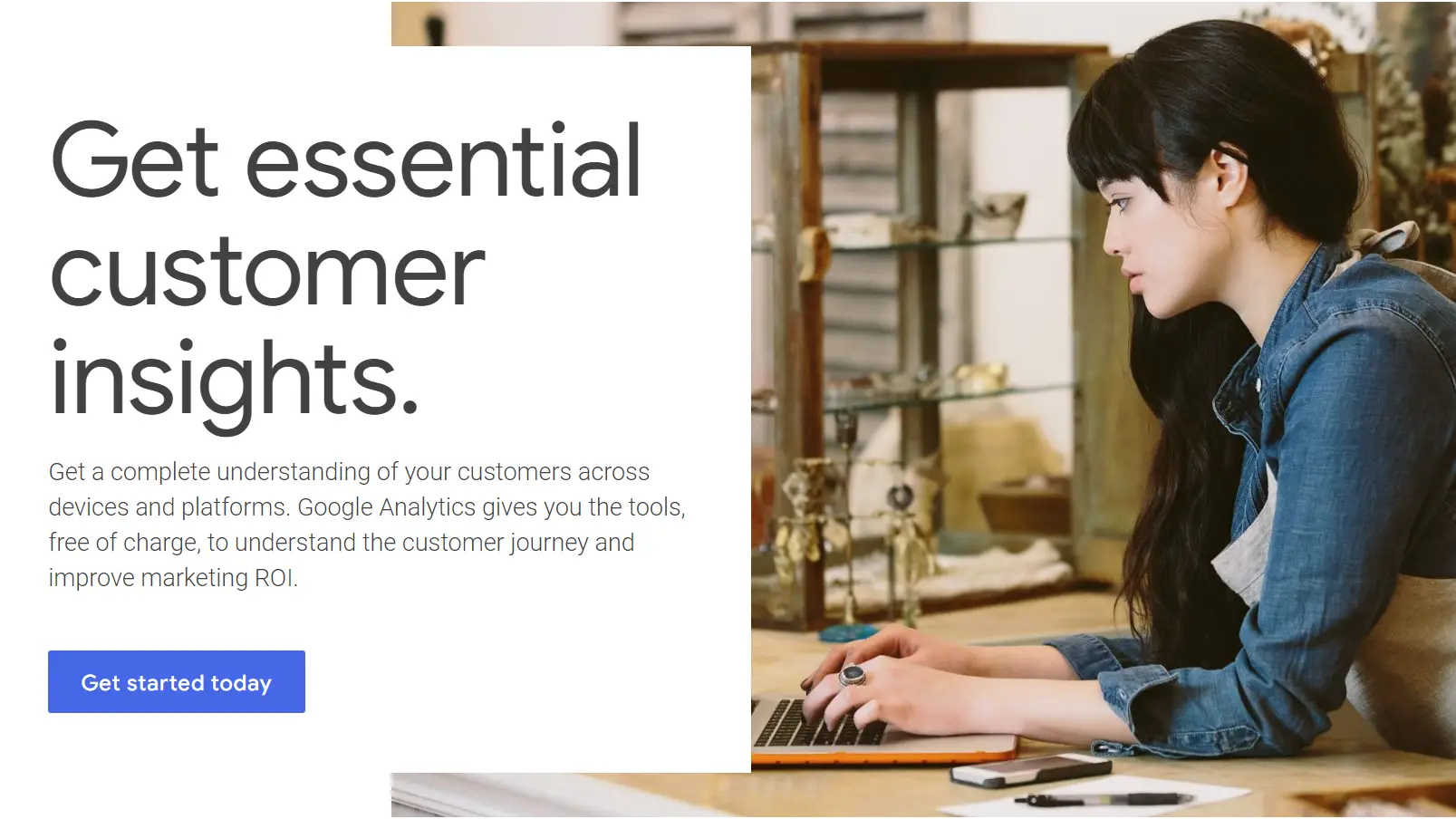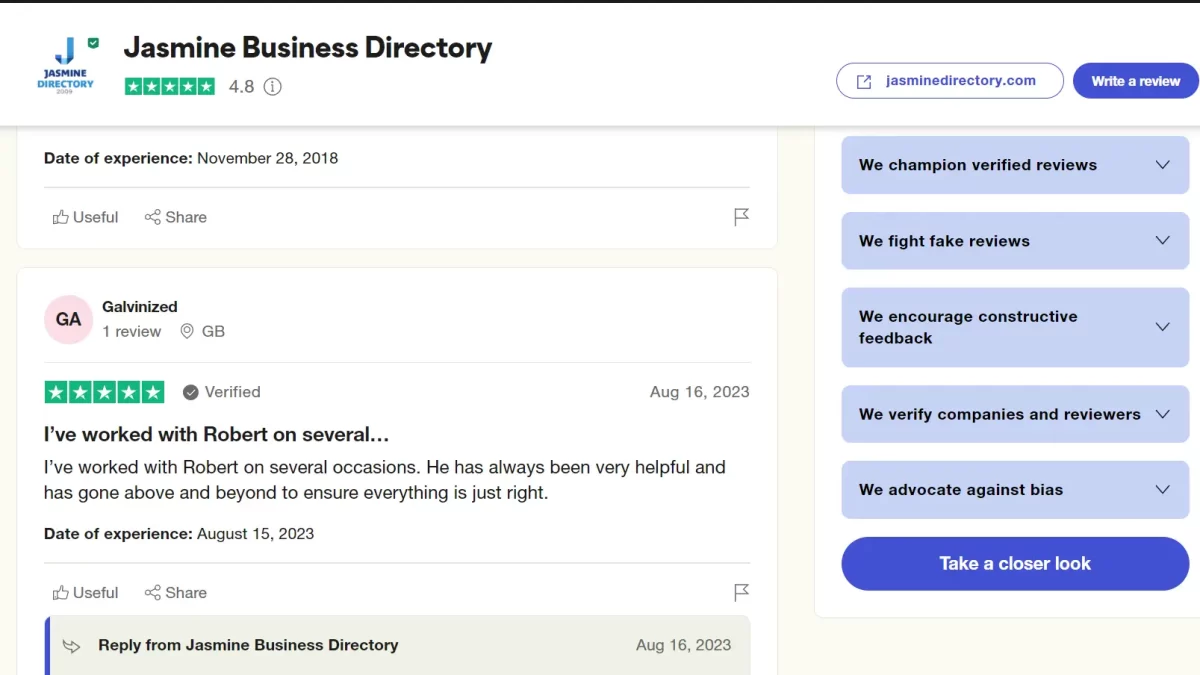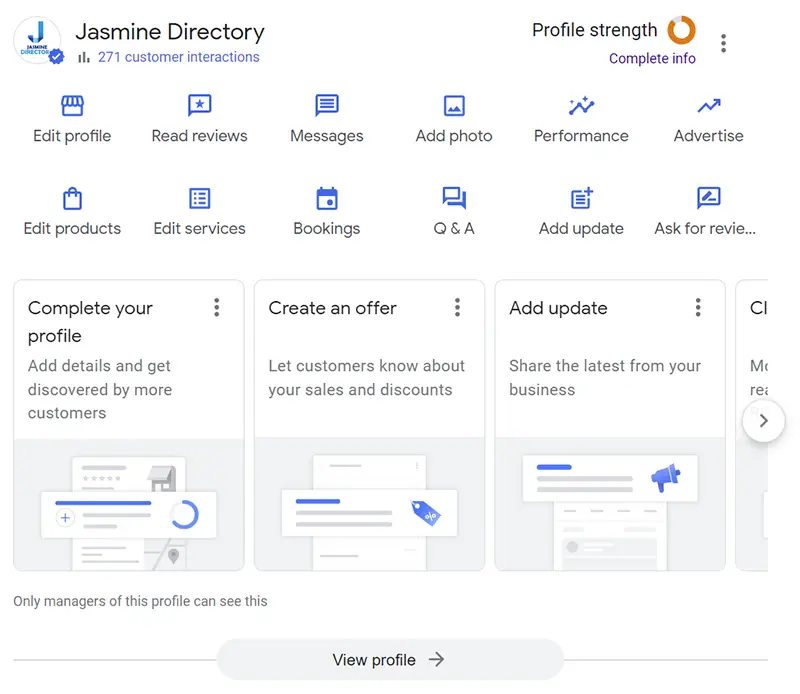As a seasoned online marketer, I can’t emphasise enough how crucial local SEO is for small businesses. In a world dominated by large corporations, local SEO is the magic wand that levels the playing field for smaller players. Let’s delve into why local SEO should be at the top of your priority list and how you can efficiently leverage it to grow your enterprise.
Local Search Engine Optimisation, commonly known as local SEO, is not just a buzzword; it’s a strategic framework. It focuses on optimizing your online presence so that your business appears in local search results.
Think about it: how often do you search for services ‘near me’ on Google? Well, your customers do the same! Local SEO ensures that when someone searches for a service or product you offer in your locality, your business shows up in the search results.

Implementing local SEO doesn’t require a PhD in rocket science; it’s about mastering the basics and consistently improving. You start by claiming and verifying your Google My Business listing, followed by optimising your website’s metadata and content for local keywords. But, let’s not forget the cherry on top—customer reviews. Positive reviews not only elevate your ranking in search results but also build credibility and trust among potential customers.
Mastering Local Keywords: A Step-by-Step Guide
For those unacquainted with the nitty-gritty of SEO, keywords might seem like an enigmatic concept. Yet, I assure you, they’re far simpler than most people think, and their importance cannot be overstated.
You see, keywords are the backbone of any effective local SEO strategy. They’re the search terms that your potential customers use when looking for products or services like yours. The goal is to identify these terms and incorporate them seamlessly into your website’s content, meta descriptions, and even images.
The first step in mastering local keywords is research. Tools like Google’s Keyword Planner, SEMrush, or Ahrefs can provide invaluable insights. You’re not just looking for any keywords; you’re looking for keywords with a local focus.
Phrases like “best Italian restaurant in [Your City]” or “[Your Service] near me” are gold mines. But it’s not just about volume; consider also the keyword difficulty and competition. A highly searched keyword with low competition is an opportunity you don’t want to miss.
Once you’ve got your list of potential keywords, the real work begins. Start incorporating them naturally into your website’s content—blogs, product descriptions, meta titles, and so on. However, don’t overdo it; Google’s algorithms are smarter than you think and can penalise you for keyword stuffing. Strike a balance, maintain high-quality, informative content, and the search engine will reward you.
From Keywords to Conversions: Tracking Success Metrics
Having plunged into the art of keyword optimisation, it’s crucial not to lose sight of the end goal: conversions. At the end of the day, SEO isn’t just about driving traffic; it’s about driving relevant traffic that converts.
Let’s break down how you can track your success metrics to ensure that your local SEO strategy isn’t just bringing in eyeballs but is also converting those eyeballs into loyal customers.
Firstly, let’s demystify the term “conversion.” In the digital marketing realm, a conversion doesn’t necessarily mean a sale. It could be any action that aligns with your business goals, such as filling out a contact form, downloading an e-book, or even just spending a certain amount of time on your website. Each action holds a specific value, and it’s essential to identify these actions and track them using tools like Google Analytics.

Tracking conversions involves setting up goals within your analytics platform and monitoring them over time. The data you accumulate here will serve two purposes:
Firstly, it can validate that your local SEO efforts are, in fact, driving meaningful traffic.
Secondly, it offers actionable insights. If you find that users are dropping off at a particular point in your sales funnel, perhaps it’s time to reassess that part of your strategy.
- Are the calls to action clear enough?
- Is the website’s user experience lacking?
By continuously monitoring these metrics, you can make data-driven adjustments to your strategy, optimising it for both reach and impact.
The Role of User Experience in Local SEO Conversions
As someone who’s been in the digital marketing field for years, I can’t stress enough the importance of user experience (UX) in your local SEO strategy. While keywords and analytics will get potential customers through the door, your website’s UX will decide whether they stay or leave.
Ultimately, if the user doesn’t find what they’re looking for quickly and easily, no amount of SEO magic will convert them into a customer. Let’s delve deeper into how UX intertwines with local SEO to enhance conversions.
The term “user experience” encapsulates a myriad of elements, ranging from website load times to navigation layout. Have you ever abandoned a website because it took too long to load? That’s a UX failure, and it affects your site’s SEO ranking too.
Google, always focused on delivering the best for its users, considers site speed as a ranking factor. Tools like Google’s PageSpeed Insights can give you an understanding of where your website stands and what needs improvement.
Another crucial aspect of UX is the site’s mobile responsiveness. With an ever-growing number of searches conducted on mobile devices, ensuring your website is mobile-friendly isn’t just a good practice; it’s a necessity.
Google’s algorithms favour mobile-optimised sites, particularly for local searches. Moreover, the easier your website is to navigate, especially on a mobile device, the more likely users are to complete a conversion action, be it a purchase or a newsletter sign-up.
The Significance of Reviews and Testimonials in Local SEO
The value of customer reviews in the digital realm simply cannot be overstated, particularly in a local context. Reviews serve as social proof, that nudge your potential customers need to trust your business. Think about it, when you’re looking for a service in your local area, be it a coffee shop or a dental clinic, what’s the first thing you do? More often than not, you’ll read reviews to gauge what others are saying. It’s human nature; we’re wired to seek social validation.
Now, one might argue that having a few bad reviews can tarnish your business. However, it’s not always about having a 5-star rating across the board; it’s about how you handle the less-than-stellar feedback.
Responding to reviews, good or bad, shows your commitment to customer satisfaction. And believe me, people notice this kind of detail. Google also notices, and will consider this when ranking your local business.

You see, Google wants to deliver the best experience for its users. This extends to the quality of the businesses it ranks in local search results.
The algorithm considers the number of reviews, the quality of those reviews, and the speed at which these reviews are generated. In addition, testimonials that include local keywords can boost your local SEO efforts. It’s like hitting two birds with one stone!
But, and this is crucial, don’t be tempted to fabricate reviews. Authenticity is key here, and most people can spot a fake review from a mile away. Fake reviews can also backfire terribly, doing more harm than good. If customers are happy with your service, they’ll naturally want to talk about it. Encourage this. Maybe offer a small incentive for their time to review your service.
So, how does one go about collecting these priceless pieces of customer feedback? You can automate the process through email follow-ups or use widgets that ask for a review after a service has been rendered. There are numerous software platforms available that can streamline this process, which can significantly benefit your local SEO.
Investing time and energy into building a reputable collection of customer reviews can pay dividends in the long run. Not only does it enhance your SEO, but it also builds a level of trust and credibility that no amount of traditional advertising can achieve. Remember, in today’s digital age, your online reputation is your currency.
The utility of Google My Business (GMB)
The utility of Google My Business (GMB) in the local SEO landscape is akin to a Swiss Army knife in a survival situation—it’s indispensable. If you haven’t set up your GMB account yet, you’re missing out on a plethora of opportunities to reach potential customers in your locality.
Google My Business offers you a platform to share essential information like your business hours, location, and the services you offer. But it doesn’t stop there. You can also post updates, reply to reviews, and even share photos of your products or recent work.
You see, when someone searches for a local business or a business “near me,” Google relies heavily on GMB profiles to provide the searcher with the most relevant results.

Here’s a tip: consistently updating your GMB profile with new photos and posts can help improve your local ranking. Why? Because Google wants to give its users the most up-to-date information. A stagnant GMB profile can be perceived as an inactive or less reliable business, which could affect your local SEO negatively.
Regularly checking your GMB dashboard for insights is a wise move. It will show you how people found your business, what keywords they used, and even what actions they took after finding you.
- Did they click to call?
- Did they visit your website?
These insights are goldmines for tweaking your local SEO strategies. I’d recommend setting aside some time each week to go through this data; it’s invaluable.
Local citations are another essential part of your GMB optimisation. Ensure your business name, address, and phone number are consistent across all platforms. You’d be surprised how many businesses overlook this detail, resulting in confusing Google’s algorithm and ultimately harming their local SEO.
Another aspect to consider is the “Questions & Answers” section of your GMB profile. Engage actively here. Answering queries not only shows that you care about customer concerns but also offers another platform to integrate local keywords naturally. It’s a double win: customer service and SEO optimisation rolled into one.
Building Quality Backlinks for Enhanced Local SEO
In the world of SEO, if content is king, then backlinks are undoubtedly the queen. A backlink is essentially a vote of confidence from one website to another. Google sees these backlinks as endorsements, which can significantly boost your website’s credibility and, consequently, its ranking. However, not all backlinks are created equal. One high-quality backlink can do more for your SEO than a dozen low-quality ones.
The strategy for building quality backlinks can be broken down into several core elements. First, focus on local businesses or directories that are in the same or complementary sectors as your own.
For example, if you’re a florist, a backlink from a local wedding planner’s blog could be incredibly beneficial. This is known as relevance, and it’s crucial for backlink quality. Google’s algorithms are smart enough to distinguish between a meaningful backlink and one that’s irrelevant or spammy.
A well-planned content marketing strategy can go a long way in acquiring high-quality backlinks. You could write insightful blog posts, create useful guides, or even produce videos that offer value to your target audience. The higher the quality of your content, the more likely it is to attract good backlinks.
For a deeper understanding of the psychology behind shareable content, I recommend reading Jonah Berger’s “Contagious: How to Build Word of Mouth in the Digital Age” (2013, Simon & Schuster, New York). The book provides a comprehensive analysis of why certain things go viral and how you can use these principles to have your content shared more widely.
Anchor text—the clickable text in a hyperlink—also plays a pivotal role. Over-optimising anchor text with aggressive keywords can lead to penalties. It’s best to keep it natural and varied. A well-rounded backlink profile with a mix of anchor text types appears more organic and is favoured by search engines.
Don’t underestimate the power of social signals either. While the debate on their direct impact on SEO continues, there’s a general consensus that positive social engagement can contribute to your site’s visibility and credibility. Make your content easily shareable on social media platforms, and engage with your audience there to foster more backlinks.
And please, steer clear of any black-hat SEO tactics like buying backlinks. Google is smarter than ever, and penalties for such practices can be severe. Always adhere to ethical SEO practices to build a sustainable and robust backlink profile.
The significance of this can’t be stressed enough. For a deeper dive into ethical SEO practices, consider reading Bruce Clay’s “Search Engine Optimization All-in-One For Dummies” (2015, Wiley, New Jersey).
How User Experience (UX) Impacts Local SEO
Ah, User Experience or UX, as it’s fondly called—the cornerstone that bridges high-quality content and effective SEO. Many businesses make the mistake of overlooking UX, focusing solely on keyword density, backlinks, and other technical aspects of SEO.
But let’s get real; even the most optimised website won’t retain visitors if it offers a terrible user experience.
The first thing you need to get right is website speed. No one, and I mean absolutely no one, likes a slow website. A study from Google suggests that 53% of mobile visitors will leave a page if it takes longer than 3 seconds to load. That’s faster than my uncle Joe makes up an excuse to avoid yard work!

The faster your site loads, the better the user experience, and the higher your chances of ranking well on search engines. Google places a significant emphasis on page speed; hence, tools like Google PageSpeed Insights can offer invaluable advice.
Now let’s talk about mobile optimisation. With smartphones basically an extension of our hands these days, mobile-friendliness is no longer optional; it’s a necessity.
Google has switched to mobile-first indexing, which means it predominantly uses the mobile version of a website for ranking and indexing. So, if your site isn’t optimised for mobile, you’re practically saying goodbye to a good chunk of your potential audience.
Navigability and layout are also critical elements in UX design. A cluttered, confusing website layout will send users running faster than I’d flee from my aunt Sally’s notorious fruitcake.
Your website should be easy to navigate, with a logical flow and clear call-to-action buttons. For example, if you run an e-commerce website, the path from product selection to checkout should be seamless and straightforward.
Aha, content readability! You could write the most brilliant, Pulitzer-worthy article, but if it looks like a jumbled mess on your webpage, you’ve lost the game. Pay attention to font size, line spacing, and text layout.
The more readable and scannable your content is, the better the UX, and thus, the SEO. If you’re in doubt about what constitutes good design, Don Norman’s book “The Design of Everyday Things” (2013, Basic Books, New York) is an excellent resource.
Remember, great UX leads to lower bounce rates, higher engagement, and ultimately, better SEO. And better SEO means more visibility, more traffic, and ultimately, more business. It’s a virtuous cycle, really.

